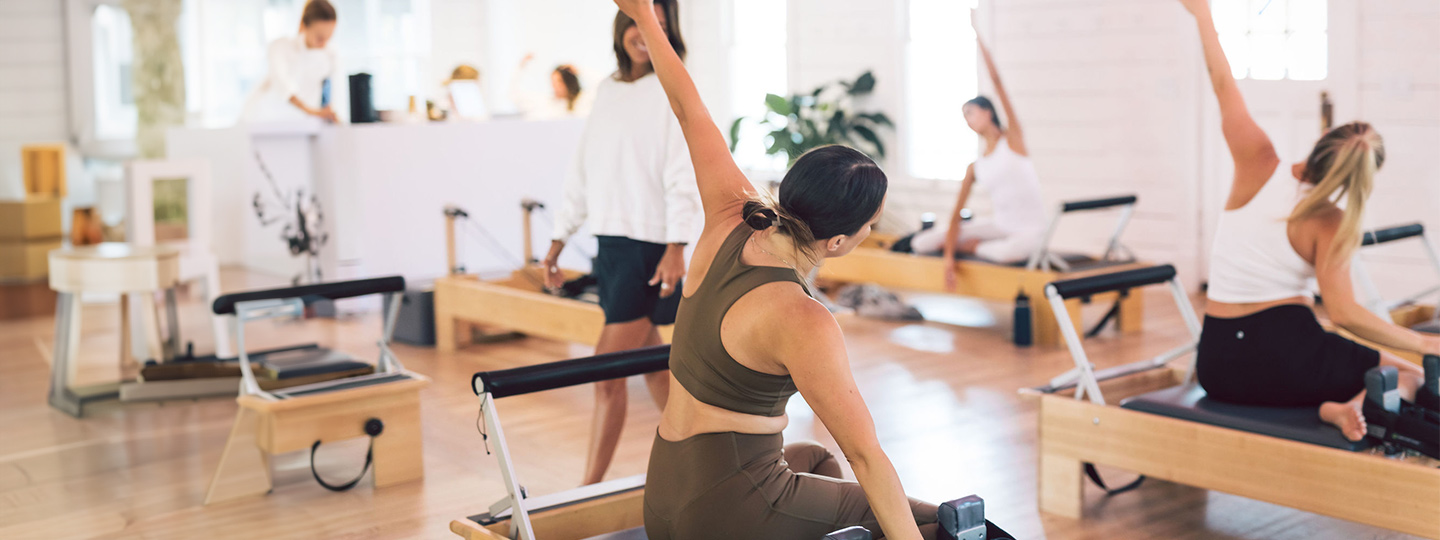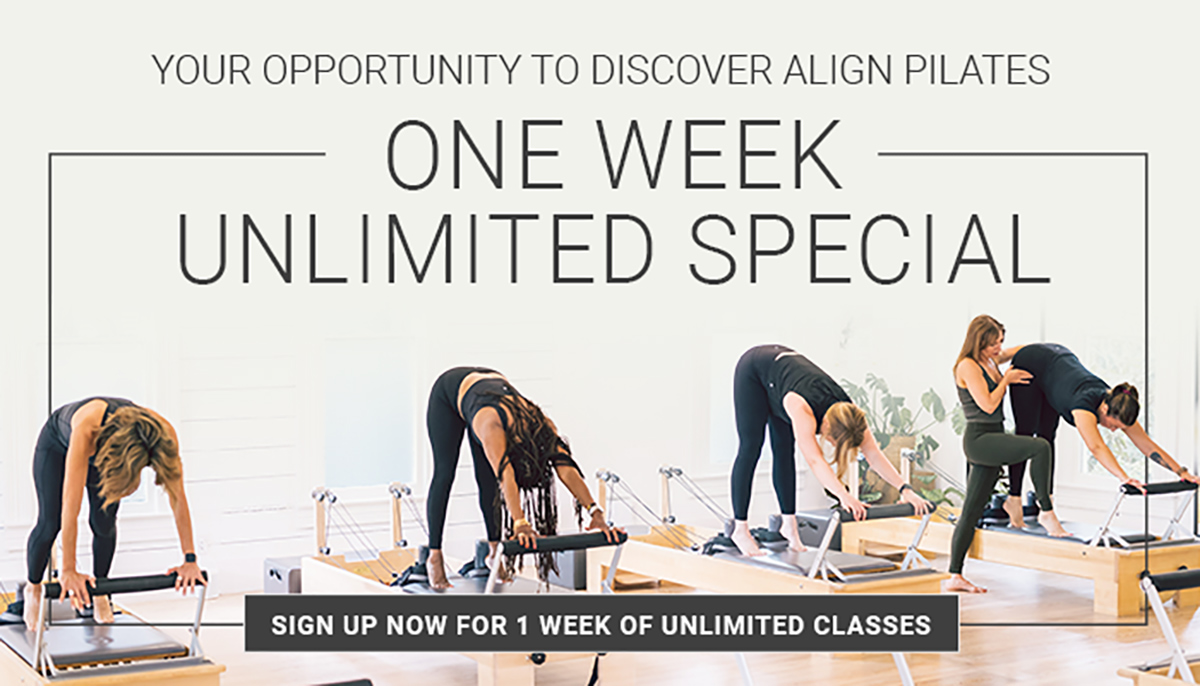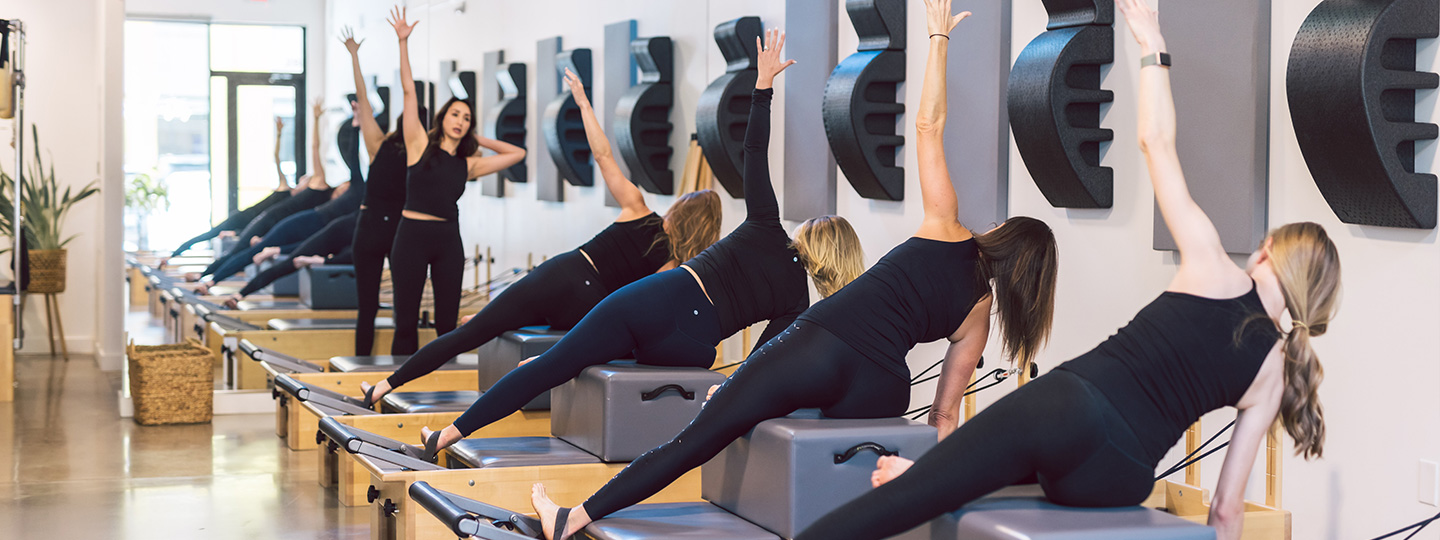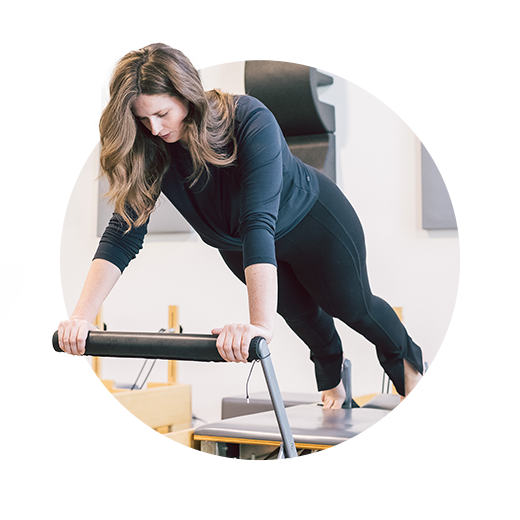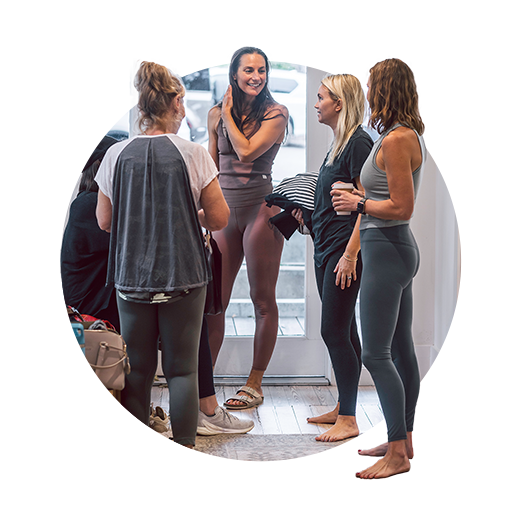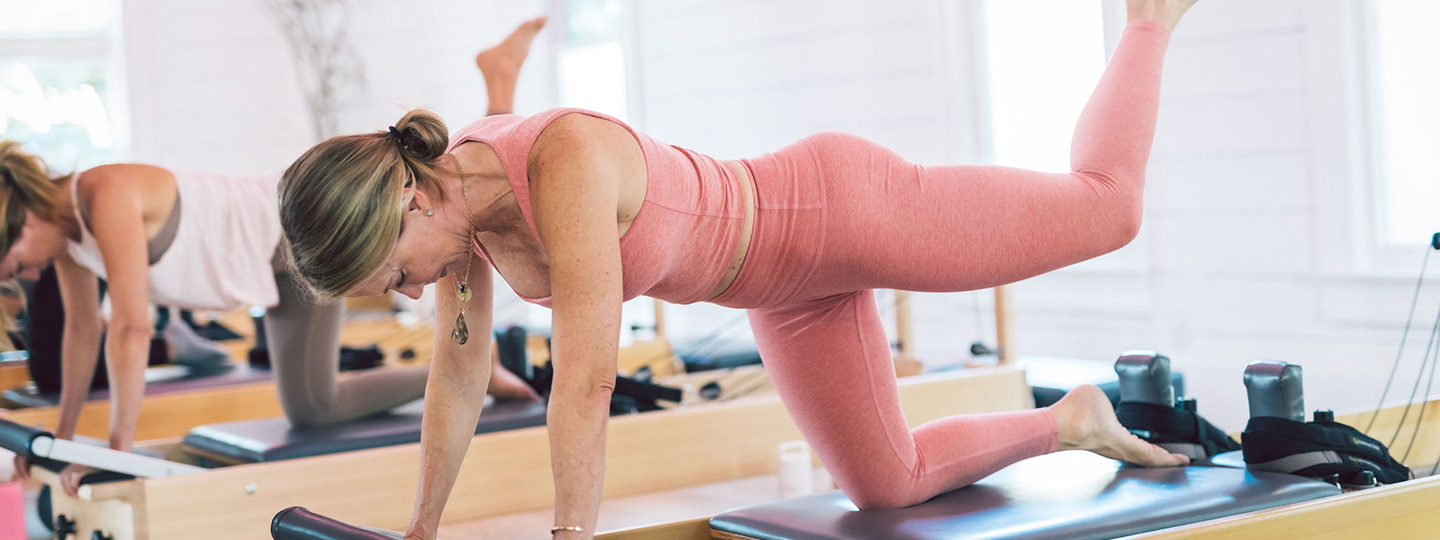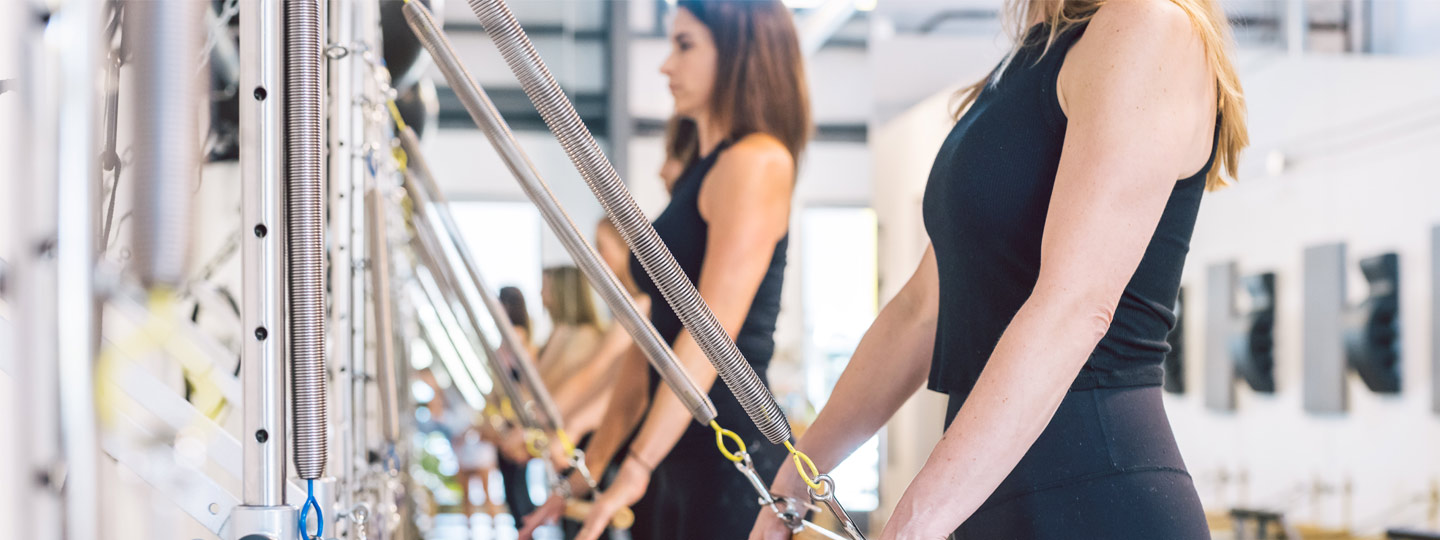Is Pilates Strength Training or Cardio?
You’ve probably been told by a doctor, fitness instructor or the internet that a mix of cardio and strength workouts is best for maintaining your overall physical health. The official guidelines from the U.S. Department of Health and Human Services are to engage in aerobic exercise for at least 150 minutes a week (or 75 minutes of more vigorous activity) and strength train two days a week.
Doing a mix of cardio and strength exercises ensures your heart stays healthy and your muscles stay strong. Strength training helps maintain bone density as you age, preventing common elderly ailments like osteoporosis and hip injuries. Cardio improves respiratory fitness which has been proven to lower blood pressure and reduce the risk of heart disease. Incorporating cardio or strength training into your week is great; incorporating both is ideal.
With some forms of exercise such as running and weightlifting, it’s easy to know which is which—strength or cardio? But with an exercise like Pilates, the line between strength training and cardio can be blurry.
Is Pilates Strength Training?
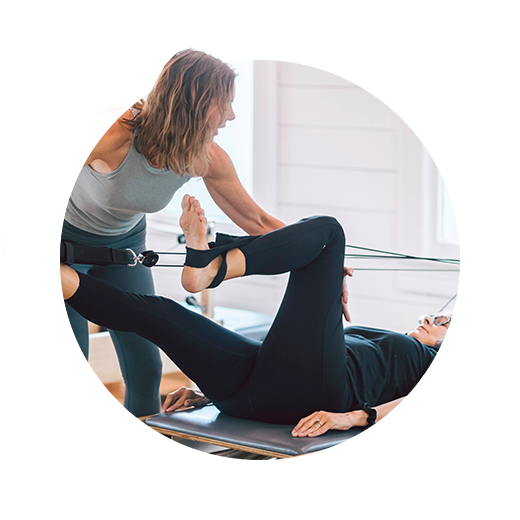
Strength training, as defined by the guidelines we mentioned above, is any movement that gets your muscles working harder than usual. This could be with weights, resistance bands or just body weight.
According to this definition, Pilates is certainly a form of strength training. Pilates founder, Joseph Pilates, created this exercise modality to build strength using the core as the powerhouse for every exercise.
Mat Pilates uses bodyweight to create resistance and build strength while Reformer Pilates uses the Reformer machine to add even more resistance challenging muscles and balance. Other mechanisms like the Pilates Chair are also used to increase resistance and strength.
It’s important to note that Pilates focuses on a certain type of strength training. As this article explains, Pilates helps maintain and sculpt muscle while improving flexibility and stability, but if you’re looking for serious strength gains, you will need to incorporate weightlifting into your routine, consistently lifting heavier and heavier weights.
If this is one of your fitness goals, Pilates is an excellent companion exercise. Because Pilates works and stabilizes the core and increases body awareness, doing Pilates a couple of times a week in addition to weight lifting will help you stay injury-free and get stronger faster.
“In 10 sessions, you feel better.
20 sessions you look better.
30 sessions you have a completely new body.”
Joseph Pilates
Pilates Founder
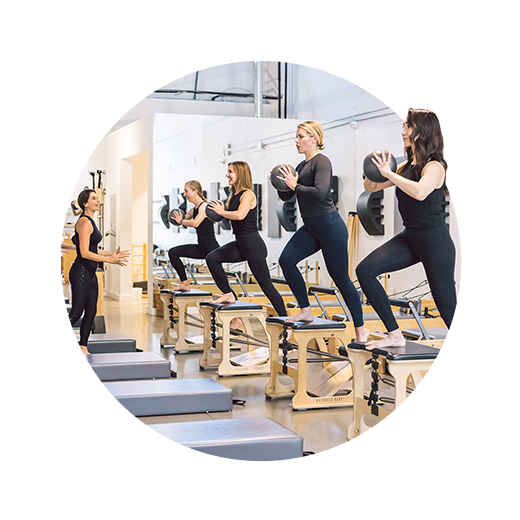
Is Pilates cardio?
Cardio exercises are any movement that gets your heart into an aerobic zone or higher. Aerobic means “with oxygen.” As Obé Fitness explains, aerobic exercises rely on oxygen as the main source of fuel. This is why you breathe a little harder when you do aerobic exercise.
Low-intensity aerobic exercises include gardening, walking around your neighborhood and even cleaning the house. Higher-intensity aerobic exercises include power walking or jogging, hiking and cycling (as in a long bike ride through your neighborhood, not a Soul Cycle class).
Also under the umbrella of cardio activity is anaerobic exercise. Anaerobic means “without oxygen.” These types of exercises require much more oxygen in addition to energy stored in muscles as fuel. Anaerobic exercises include high-intensity interval training (HIIT) workouts, sprinting and anything that pushes you to your limit.
While some Pilates classes may not get your heart rate revved enough to be considered cardio, most modern Pilates classes and most classes we teach at Align do get your heart into the aerobic zone—at least for parts of the class—and can, therefore, be considered cardio. Our more intense classes like Burn, Jump and Bodhi Burn definitely get your heart rate into the aerobic and high aerobic zones, so these are perfect choices if you’re wanting to get in a mix of strength and cardio.
While Pilates may not be the first to come to mind when you’re thinking about your weekly cardio workout, studies show Pilates does improve respiratory fitness. This study looked at the respiratory benefits of walking versus Pilates and found that doing a 60-minute Pilates class three times a week improved respiratory fitness more than regular walking. This study found that Pilates can increase V02 max levels—the gold standard in measuring respiratory fitness.
The best way to know if your Pilates class can be considered cardio is to wear a heart rate monitor or watch and track your heart rate levels throughout class. If your heart rate stays elevated, you can trust you’re working your heart along with your muscles.
As is the case with any exercise, what you do and how often you do it all depends on your goals. If you’re training for a marathon, you can’t rely on Pilates as your sole cardio workout. You will have to run multiple times a week. If you’re wanting to improve your deadlift, you will need to get in the gym and lift heavy. But as you run and lift weights, practicing Pilates on your off days is a great way to support these goals.
If you don’t have any specific fitness goals right now and simply want to stay active, practicing Pilates two to three times a week along with a day or two of other aerobic exercise, like walking, jogging or hiking, is an excellent way to maintain your overall fitness, sculpt your muscles, improve your flexibility and create a stronger and more stable core.
Whether Pilates is your primary workout right now or complementary to another fitness focus, weekly Pilates can be incorporated into any weekly fitness routine to su
ALIGN Pilates Studios West
ALIGN Pilates Studios East
ALIGN
